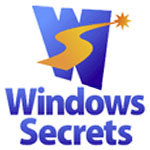
By Woody Leonhard/Windows Secrets Newsletter
In my Sept. 22 Woody’s Windows column, I stepped you through the basics of searching in Windows 7 — in particular, Win7′s two undocumented search idiosyncrasies that can cause no end of confusion.
In Part 2, I give you the advanced course, including how to search in Win7 the way you used to in Windows XP, Windows 95, or (gulp!) even DOS.
Search for filenames, the new old-fashioned way
Here’s how most experienced Windows users get turned off by Windows 7′s search: they click the Win7 Start orb, type something into the Search box, and wait while Windows comes back with results — first in bushels, then in barrels, and finally an avalanche. “Whooooa!” (or something slightly less printable) they say, “I only wanted to find files with this text in the filename …. Windows 7 is useless; they’ve even included spam messages in here.”
Yes, I still hear from old-timers who cluck-cluck-cluck that even DOS did it better.
Typing text into the Windows 7 search box is a bit like sticking a straw into an open fire hydrant. As I recommended in Part 1, if you have any idea where the text you seek may be located, you’re far better off going to that location (with Windows Explorer, say, or Outlook, or Live Mail) and starting the search from that folder or one above it. Yes, Windows indexes spam messages — which is to say, mail in your Junk Mail folder — and it’ll bring up the junk if you give it enough time. Nothing you can do about it.
What if you’re just looking for a filename? Not so long ago, that’s all you could look for. Though the rules and syntax are a bit strange, it’s possible — even relatively easy — in Windows 7.
Let’s say you want to find file names that contain the text string “secret.” You use the symbols ~= like this:
system.filename:~=”secret”
That will match files with names such as Windows Secrets.doc and MySecret.html.
To look for files with names that begin with a specific piece of text, use the ~ symbols. For example:
system.filename:~<"secret"
That will match Secrets.com but not SomeSecret.xls.
This post is excerpted with permission from Windows Secrets.




